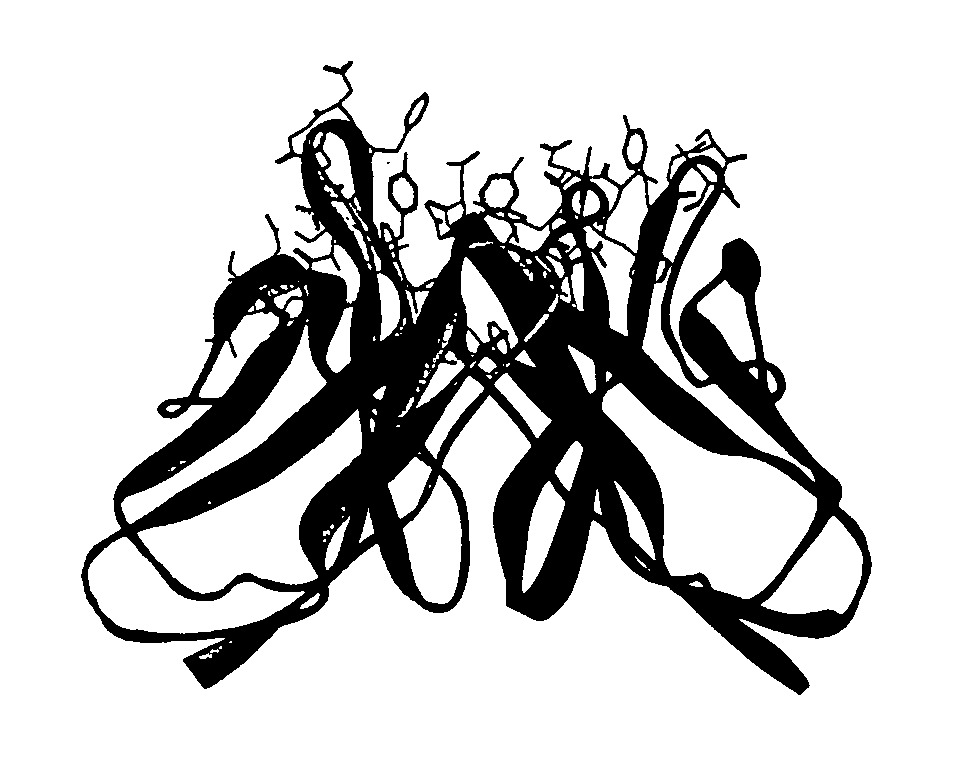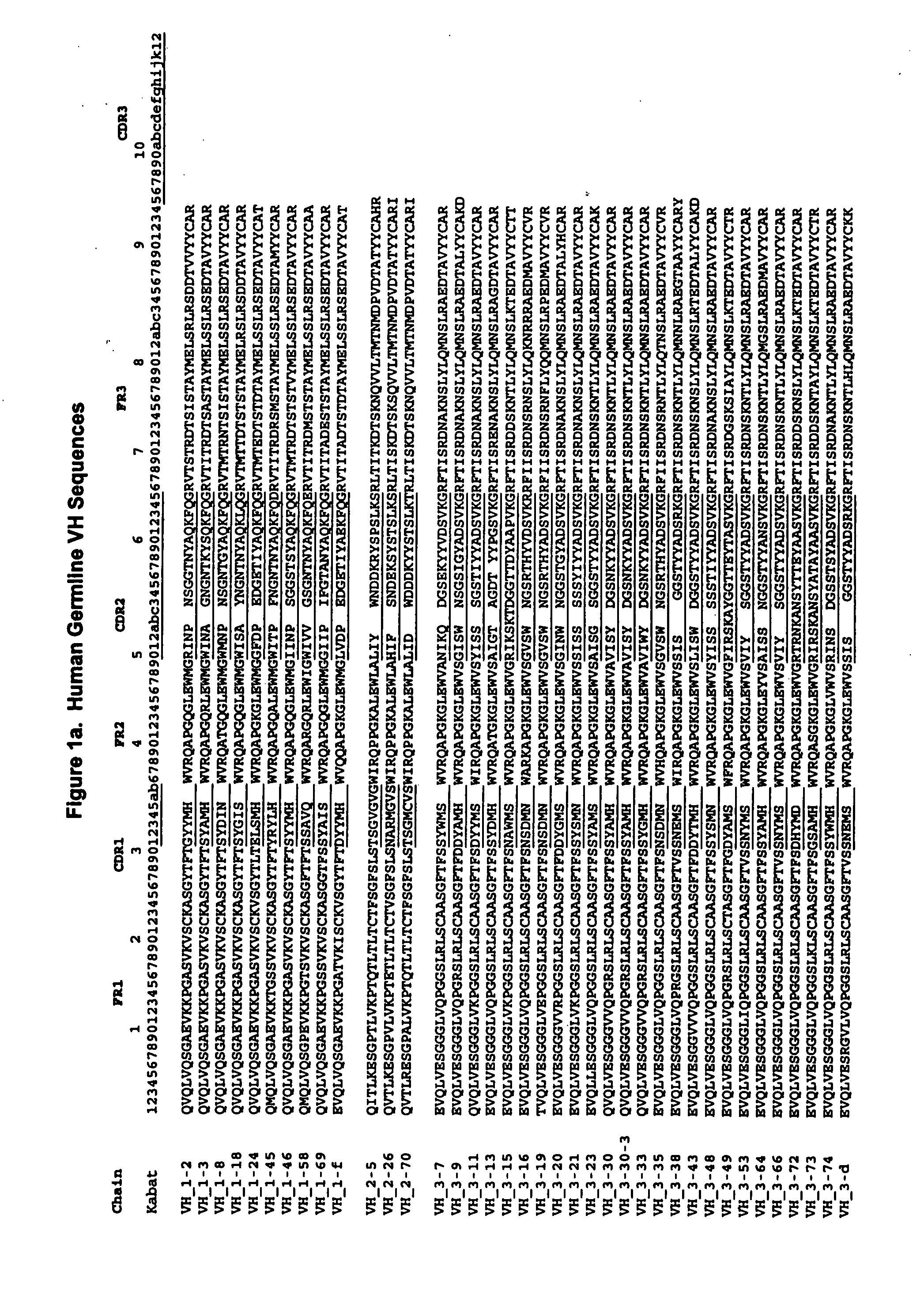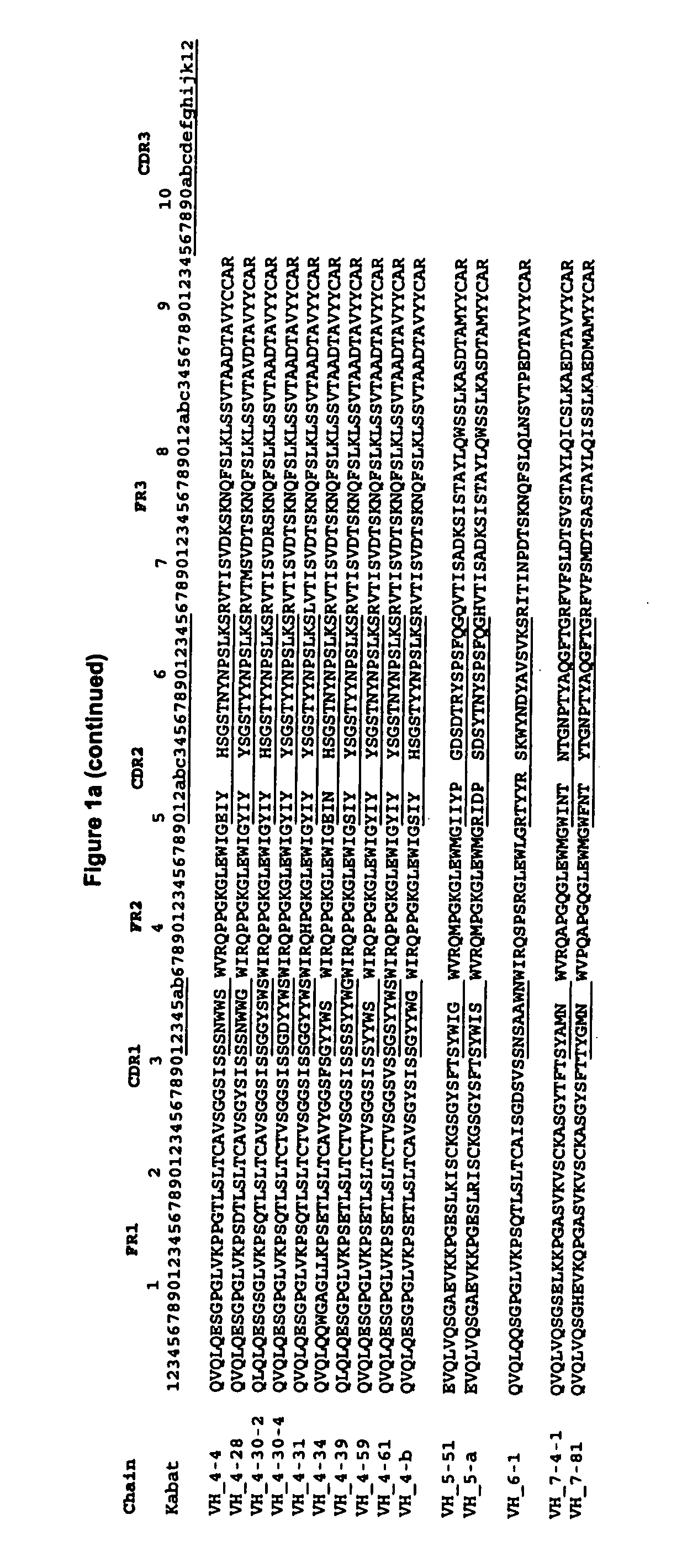Methods of generating variant proteins with increased host string content and compositions thereof
a technology of host string content and variant proteins, applied in the field of generating variant proteins with increased host string content, can solve the problems of limiting the efficacy and safety of protein therapeutics in multiple ways, reducing reducing their therapeutic utility, so as to reduce the immunogenicity of proteins, and maximize the content of human sequence strings
- Summary
- Abstract
- Description
- Claims
- Application Information
AI Technical Summary
Benefits of technology
Problems solved by technology
Method used
Image
Examples
example 1
Immunogenicity Reduction of AC10
[0172]To illustrate application of the method described in the present invention, and to validate its broad applicability to immunogenicity reduction of proteins, a xenogeneic antibody example is provided using as the parent sequence the anti-CD30 antibody AC10 (Bowen et al. Journal of Immunology, 1993, 151: 5896). A structural model of the mouse AC10 variable region was constructed using standard antibody modeling methods known in the art. FIGS. 3 and 4 show the sequences, host string content, and structures of the AC10 VL and VH domains (referred to as L0 AC10 VL and H0 AC10 VH respectively). A CDR graft of this antibody was constructed by placing the AC10 CDRs into the context of the frameworks of the most homologous host germlines, determined to be vlk—4-1 for VL and vh—1-3 for VH using the sequence alignment program BLAST. The sequences and string content of these CDR grafts are shown in FIGS. 5 and 6, along with structures of modeled AC10 highli...
example 2
Immunogenicity Reduction of C225
[0191]To illustrate further application of the method described in the present invention, and to validate its broad applicability to immunogenicity reduction of proteins, a second xenogeneic antibody example is provided using the variable region of C225 as the parent sequence (cetuximab, Erbitux®, Imclone) (U.S. Pat. No. 4,943,533; PCT WO 96 / 40210). C225 is a murine anti-EGFR antibody, a chimeric version of which is currently approved for the treatment of cancer. A structural model of the murine C225 variable region was constructed using standard antibody modeling methods known in the art. FIGS. 26 and 27 show the sequences, host string content, and structures of the C225 VL and VH domains. A CDR graft of this antibody was constructed by placing the C225 CDRs into the context of the frameworks of the most homologous human germlines, determined to be vlk—6D-21 for VL and vh—4-30-4 for VH using the sequence alignment program BLAST. The sequences and str...
example 3
Immunogenicity Reduction of ICR62
[0200]To further illustrate application of the method described in the present invention, and to validate its broad applicability to immunogenicity reduction of proteins, an example is provided using as the parent sequence the anti-EGFR antibody ICR62 (Institute of Cancer Research) (PCT WO 95 / 20045; Modjtahedi et al., 1993, J. Cell Biophys. 1993, 22(1-3):129-46; Modjtahedi et al., 1993, Br J. Cancer. 1993, 67(2):247-53; Modjtahedi et al, 1996, Br J Cancer, 73(2):228-35; Modjtahedi et al, 2003, Int J Cancer, 105(2):273-80). A structural model of the rat ICR62 variable region was constructed using standard antibody modeling methods known in the art. FIGS. 43 and 44 show the sequences, host string content, and structures of the ICR62 VL and VH domains. A CDR graft of this antibody was constructed by placing the ICR62 CDRs into the context of the frameworks of the most homologous human germlines, determined to be vlk—1-17 for VL and vh—1-f for VH using t...
PUM
| Property | Measurement | Unit |
|---|---|---|
| affinity | aaaaa | aaaaa |
| homogeneity | aaaaa | aaaaa |
| solubility | aaaaa | aaaaa |
Abstract
Description
Claims
Application Information
 Login to View More
Login to View More - R&D
- Intellectual Property
- Life Sciences
- Materials
- Tech Scout
- Unparalleled Data Quality
- Higher Quality Content
- 60% Fewer Hallucinations
Browse by: Latest US Patents, China's latest patents, Technical Efficacy Thesaurus, Application Domain, Technology Topic, Popular Technical Reports.
© 2025 PatSnap. All rights reserved.Legal|Privacy policy|Modern Slavery Act Transparency Statement|Sitemap|About US| Contact US: help@patsnap.com



